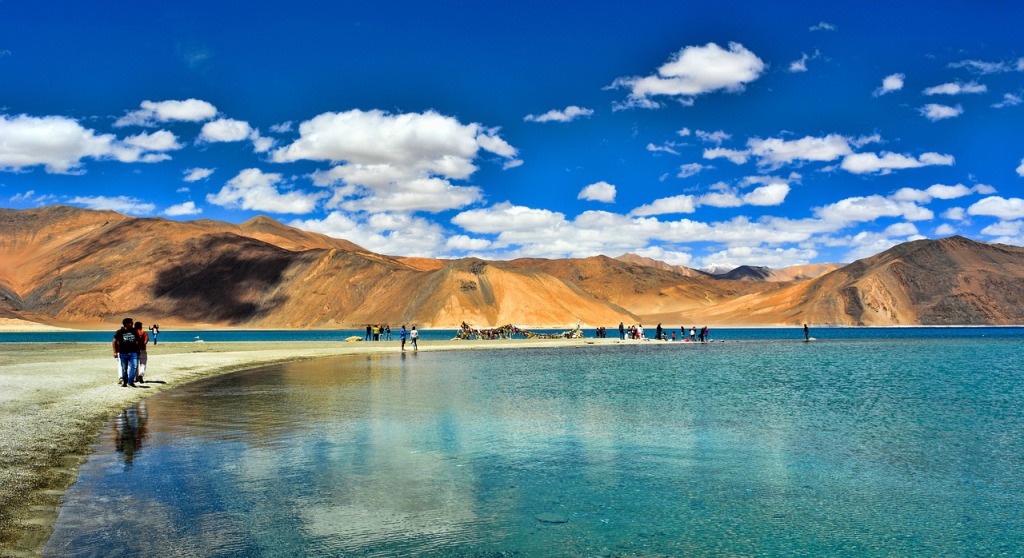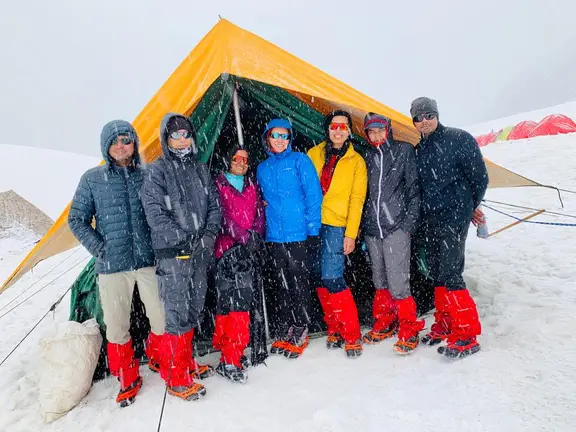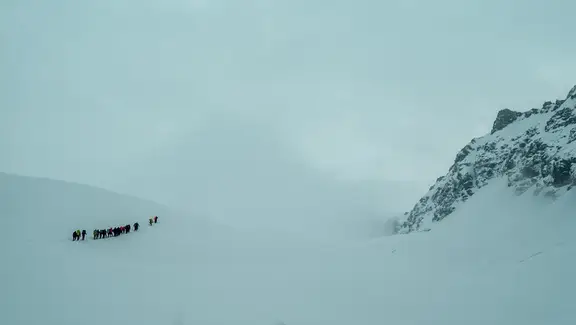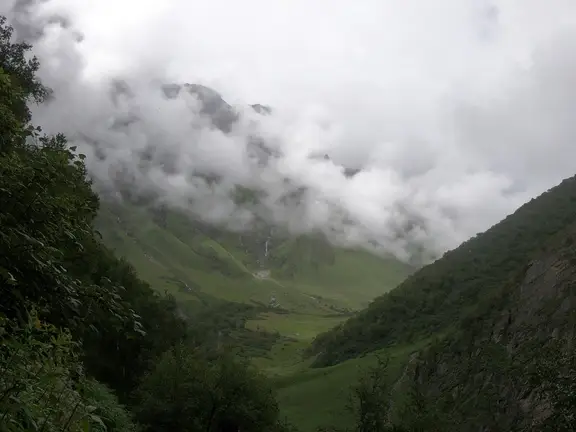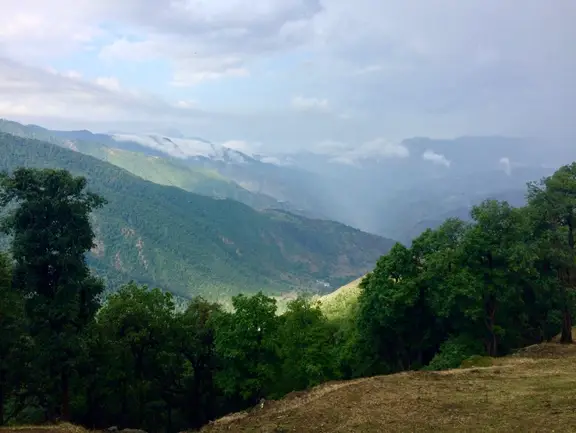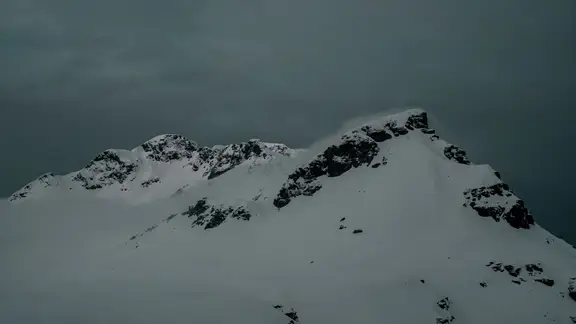Best Places To Visit In Leh-Ladakh 2025
The grandeur and peacefulness of Ladakh is hard to articulate. The 'country of high passes,' at an elevation of 8,370 feet above sea level, provides the Himalayan range a stunning combination of green and white. The harshness of the Himalayas may be seen through wide swaths of white sand. Nothing, however, approaches to the calmness that the lakes provide. Ladakh is famous for its unperturbed, unspoilt pristine beauty of the rugged mountains. The places to visit in Leh Ladakh are mostly the alluring palaces, lakes and monasteries.
The best time to visit Leh Ladakh in during the summers. The months of April and May are perfect for visiting Ladakh since numerous tourist attractions are open. The months of June through August are extremely popular with tourists who want to escape the crowds.
Here is the list of top 20 best places to visit in Leh-Ladakh that are worth visiting this year
1. Pangong Lake
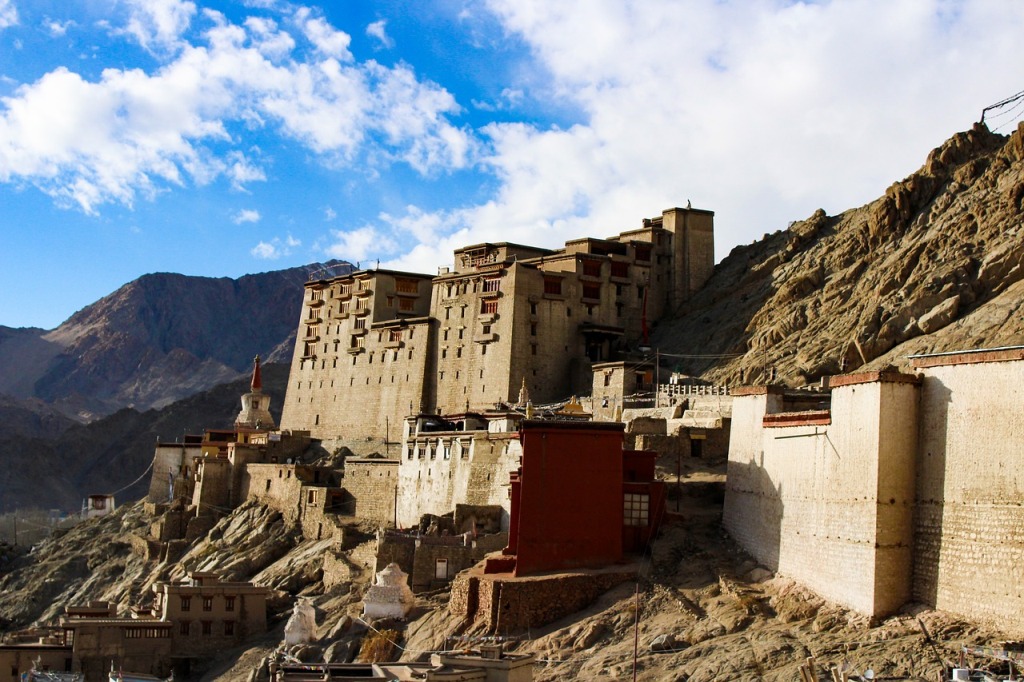
Pangong Lake, Ladakh popularly known as Pangong Tso, is derived from a Tibetan word meaning "long, narrow, crane lake". Pangong Lake is 134 km long Endorheic Lake of the Himalayas which is situated at a staggering height of 4,350 m (13,944 ft). The spot has been a beloved shoot location for many blockbuster films from 3 idiots to Jab Tak Hain Jaan. Pangong Lake in winters owing to its sheer altitude freezes as the temperature at the lake dips from 10°C to -5°C.
The crystal clear and sapphire blue waters of the lake with the backdrop of gentle mountains may convince you that nothing could be more glorious than this. Pangong Lake has more tricks up its sleeve. In fact, its uniqueness lies in the fact that it changes its colour not just through the year but even through the day. The lake displays colours ranging from baby blue, azure, turquoise to even red. Even though Pangong Lake's altitude of 13,944 ft is high, trekkers visit this beautiful lake to witness its beauty. The best time to visit Pangong lake is from May to september as winters are very harsh.
2. Magnetic Hill
Magnetic Hill Ladakh is located on the Leh-Kargil-Baltic National Highway in the Trans-Himalayan region and perched at an altitude of 4,267 m. The Magnetic Hill of Ladakh is not only a visual treat but a mystifying phenomenon. The hills possess mysterious abilities that make travelers from all over the globe flock together to experience a peculiar, gravity-defying occurrence.
Few meters from the Magnetic Hill road, signs are put up to keep your vehicle in neutral gear. Even then from this point the vehicle continues in to move at a speed of 20 km/h as if driven by an unseen hand. There are many theories regarding the nature of this strange phenomenon from optical illusions to mountains having a magnetic field within, but even now the basis of the spectacle remains speculative. The small stretch of this Magnetic Hill road which is around 30 kms from Leh shows a phenomenon that makes you believe that The Magnetic hills in Ladakh defies gravity. The best time to visit this mysterious place is from May to October.
3. Leh Palace
Sitting pretty on the peak of the deserted Tsemo Hill, the Leh palace belonged to a former royal family back in the 17th century. Inside the palace, you will witness great artistry in the form of exquisite old paintings, some as old as 450 years.
Some of these paintings also used colours made of powdered stones and gems. The palace also displays the royal collection of jewelry, crowns, and ceremonial dresses and a monastery. The Leh palace is not just a popular tourist attraction but an important center of culture for Buddhists. From the apex, the view of the Ladakh Mountains and the town in all its glory makes for a spell-binding sight. The best time to visit this place of this historical importance is during the months of May and June.
4. Chadar Trek
Chadar Lake trek is pegged as one of the most challenging and thrilling adventure treks. Chadar Trek happens to be immensely popular among skilled trekkers. The challenge of the trek lies in traversing through the frozen Zanskar River, thus this trek is also known as Zanskar Trek or Frozen river trek.
The lower section of this river becomes a hotspot for river rafting expeditions each summer but in winter it beckons the trekkers to experience its magic. The trek concludes at Zanskar valley but since in winter all roads leading up to it remains shut due to heavy snowfall, the frozen river is the only way. The Chadar trek has thus been very aptly named. Chadar lake trek is of 9 days and holds a lifetime of adventure. The best time to visit this frozen river is during the winter months from January to mid-February.
5. Tso Moriri
Lying completely within the Indian Territory, the Tso Moriri Lake of the Changthang region of Ladakh happens to be the largest high altitude lake of India and what a thing of beauty it is! This serene blue lake that blends into its backdrop of mountains somehow has a very romantic feel attached to it. The Tsomoriri lake is situated at an altitude of 4522 m (14,836 ft).
Tourists often set up camps by the lake to take in the full experience of the place. The area is however scarcely populated due to the extreme weather conditions. Lack of oxygen will be felt if your body is not acclimatized to its high altitude. Tsomoriri Lake is also known as the Mountain Lake, and is a brackish water lake. Tsomoriri Ladakh is best visited in summers from June to August. The weather of Tso Moriri is cool and comfortable and the temperature ranges from 2-30 degree celsius.
6. Zanskar Valley
Locally called Zahar, Zanskar valley is a small district of Kargil located in eastern Ladakh, 105 km from Leh. The valley is known for its verdant green meadows, snow-capped mountains, sparkling clearwater river, and a pleasant climate. There are also a lot of fun activities that can be carried out in the valley making it a very popular hotspot.
Trekking in Zanskar valley is favoured among adventure lovers. Zanskar Valley chadar trek is among the must to do treks. The best time to visit zanskar valley is during winter, as the valley is best suited for thrill-seekers. Among places to visit in Zanskar valley are the Suru Valley, Shafat Glacier, Doda River, and Sani Monastery. The region also remains cut-off from the rest of the world for 9 months every year so it is best to plan your trip well in advance.
7. Phugtal Monastery
Perched at an isolated corner of Lungnak Valley in the South-eastern region of Zanskar Valley, Ladakh, lies the Phugtal Gompa or Phugtal Monastery. One may think it is nothing more than simply a religious site but like every other location in Ladakh, this too has a twist of its own. One of the most mystifying things about the monastery is that it is built around and inside a natural cave right at the cliff’s edge.
The bizarre nature of its architecture has thus given it the name of “cave monastery”. The remote location and aura of the monastery calls for hushed voices and, peace & tranquility. Phugtal Monastery Trek is very famous among all the people around the world. If you are on the path to self discovery then trek to Phugtal gompa will help you experience who you really are. The month of August features as the best time to visit this monastery.
8. Shanti Stupa Ladakh
The Tibetan edifice, Shanti Stupa, is probably one of the most magnificent structures you will ever lay your eyes on. This white-dome shaped structure standing atop a hill at a striking height of 3609 m, is a thing of inexplicable beauty. Facing towards the Leh Palace, the Shanti Stupa overlooks the vibrant and deep-coloured city of Leh.
The beauty of the place is notched up another level on moonlit nights when where the entire city glows underneath the bewitching moon. The Shanti Stupa in Ladakh is the perfect place if you are looking to reconnect with your spiritual side and for those wanting to be mesmerized by the wonders of Mother Nature. The best time to visit this magical place is from July to September.
9. Khardung La Pass: Highest Motorable Road
Khardung La ladakh is situated at an elevation of 5,359 m and located in the Leh district. Khardung La is a famed mountain pass among thrill-seekers. It is historically and strategically quite important to India as it acts as a link from Leh to Kashgar and also carries goods to the Siachen glacier, making it the highest motorable road in the world. It still remains unexplored for the most part. Bikers from across the globe come to find beauty and danger in the serpentine trails of the pass.
Making one feel on top of the world, the KhardungLa top is located at an altitude of 5600 m and happens to be one of the highest passes in India that can be traversed on bikes. This mountain pass in the Ladakh region acts as the gateway to the isolated and picturesque valleys of Shyok and Nubra. The twisting roads offer astonishing views of the imposing mountains and captivating Khardung la view point. It lures the daring to experience its wild roads from every nook and cranny along the journey. The best time to embark on this trek is from April to June and September to October.
10. Rafting in Ladakh
One of the most coveted activities offered by the adventurous terrain of Ladakh is river rafting. The Indus River flowing through the northern region of the place is where the activity is conducted and it happens to be even more fun and exciting than it looks. River Rafting in Ladakh is also conducted in the rapids of the Zanskar River of the Zanskar valley and river rafting in the Nubra Valley.
Here you may choose the level of difficulty you want to face, they range from Level I to Level IV. Whitewater rafting along the serpentine rapids of Zanskar amidst towering mountains, chilly winds, freezing water and the pervading feeling of excitement is what makes the expedition all the more tantalizing. River rafting isn’t an extreme sport and can be enjoyed by anyone with an eager mind and a little thirst for adventure.
11. Nubra Valley
Nubra is one of the sub-districts of Ladakh, this valley was once a trading route connecting eastern Tibet to Turkestan and was up until recent times before it was shut down. The Nubra Valley altitude is 10000ft above the sea level and is located at the northern side of Ladakh.
The Nubra Valley Ladakh invites you back into its bosom to experience the land’s untouched and unfiltered beauty, a place frozen in time. With the picturesque Shyok River gliding by, a wide landscape, and staggering mountains to keep you company. Places to visit in Nubra Valley are Bactarian camel safari, Panamik village, Diskit monastery, Hundur monastery and many more. Nubra valley is an experience that not too many get to witness but the ones who do, never forget.The best time to visit this valley is during April to June and September to October.
12. Namgyal Tsemo Monastery
Erected in the 15th century atop a hill and half-hidden by the Leh Palace, the Namgyal Tsemo Monastery is a significant Buddhist shrine in Leh. The edifice was established by King Tashi Namgyal, after whom it has been named. The purpose behind the construction of the monastery was to guard the valley as well as the Namgyal heritage from the evil eye.
Despite its age and ruin, it still strikes an impressive note in its bright red colour. The highlights of the Namgyal Tsemo Gompa monastery include a three-storey statue of Buddha carved in gold and ancient idols of Manjushri and Avalokitesvara. This humble Tsemo Gompa is perfect if you want a closer look at a diverse culture while enjoying a serene ambience. The best time to visit Namgyal Tsemo monastery is during June and September.
13. Spituk Monastery
Locally known as Pethup Gompa, Spituk Monastery is located a mere 8 kilometers from Leh. Apart from being the quintessential Buddhist monastery, the shrine also exhibits a proud and magnificent statue of the much revered Hindu goddess Kali.
The Spituk Monastery Ladakh is also quite famed for its Gustor Festival which is held from the 27th – 29th every year on the eleventh month of the Tibetan Calendar. This two-day long fiesta is filled with engaging rituals, masked dances and vivid colours. The festival usually falls during the months of winter that heightens the merriment of the crowd.
14. Stok Palace
Constructed in 1825 for King Tsespal Tondup Namgyal, the Stok Palace is at present home to the royal descendants of King Sengge Namgyal. On your tour of the palace, you are bound to marvel at the fusion of traditional and contemporary styles of architecture of the palace.
The premises hold numerous beautiful gardens, a library filled to the brim with the collection of Lord Buddha’s teachings and the Stok Palace Museum that shows the rich heritage and history around it. The palace also hosts an annual masked-dance festival which encourages huge participation from the locals.
15. Chemrey Monastery
Founded in 1664 by the Lama Tagsang Raschen, as a memorial of King Sengge Namgyal, the Chemrey Monastery is located to the east of Leh. The uniqueness of this shrine lies in the imposing statue of Padmasambhava which rises up to a storey and ancient scriptures with pages of silver and texts of gold.
A festival named Chemrey Angchok is also celebrated here in the ninth month of the Tibetan calendar with ritualistic dance performances. The best time to visit Chemrey monastery is between June and October.
16. Tso Kar
Located in the charming valley of Ladakh, Tso Kar Lake is a calm and peaceful saline lake that is also popular as the “White Lake”. The remoteness and secluded vibe of the locality where the Tso Kar lake is situated adds to its awe and splendor.
The place is also famed for being home to numerous species of birds such as Brahmin Ducks, Bar-headed Geese, Great-crested Grebe. The most popular though is the Black-necked Crane which migrates here to lay eggs. The sheer image of the bird flying into the sky in a backdrop of milk-white mountains and greener still grasslands is a sight straight out of a fantasy movie. The best time to visit Tso Kar is June to September.
17. Likir Monastery
One of the oldest & well-kept monasteries of Jammu and Kashmir, the Likir Monastery is instantly recognized by the description of white coloured buildings with red roof borders.
It is situated at an elevation of 3700 m(12,140 ft). The best time to pay your visit to Likir monastery is in the months from June to September. The Likir Monastery has been standing tall since the 11th century in all its serenity and with an imposing 75 feet tall statue of Buddha. The view of the shrine is as majestic from the distance as it is upfront.
18. Kargil
Kargil is not just known for its historic importance to our country but also for the breathtaking sights its journey has to offer. The trip from Kargil to Leh is a much talked about trip and has lured many adventure junkies.
The blend of Kashmir’s beauty with the grandeur of Leh is a sight you will never forget regardless of where your other travel ventures take you. With enchanting views of dizzying Himalayan Mountains, vivid landscapes and the royal presence of the Indus River, this is a trip you have to be on. The best time to visit Kargil is from April to June.
19. Yarab Tso
About 15 km in distance from the Diskit region of Nubra valley, Yarab Tso is a captivating lake that flows by the Sumur Village. The Yarab Tso Lake is considered to be one of the holiest lakes in the region.
The surrounding views of mountains, tall winter land trees and the vast open sky reflected in the pellucid waters of the Yarab Tso lake makes for an enchanting view. The best time to visit Yarab Tso is from July to September.
20. Hemis Monastery
Any compilation of the most wonderful places to visit in Ladakh won’t be complete without the inclusion of Hemis, the Buddhist monastery (gompa) re-established by King Sengge Namgyal. Located 45 km to the south of Leh, this impressive edifice was built in 1630 on the banks of the Indus River and happens to be the biggest monastery of Ladakh. With its complex design, large courtyards, and stone walls depicting carved-out deities, the Hemis Monastery is an intriguing and impressive figure.
Surrounded by prayer flags that keeps fluttering in the breeze, one is sure to be instantly enraptured by the beauty of it all. The Hemis Gompa Ladakh is also popular for its collection of gold statues and stupas adorned with precious stones, called the Thangkas. One of the biggest crowd-pullers is in the display of the largest Thangkas, in the Hemis festival, which commemorates the birth anniversary of Guru Padmasambhava. It is held once in every 12 years!
Therefore it is celebrated with much merriment and aplomb. The festival brings together all the people of Leh-Ladakh to celebrate the triumph of good over evil. Rituals, mask dances, and colourful bazaars are some of its popular events. The best time to visit Hemis monastery is from August to October.



